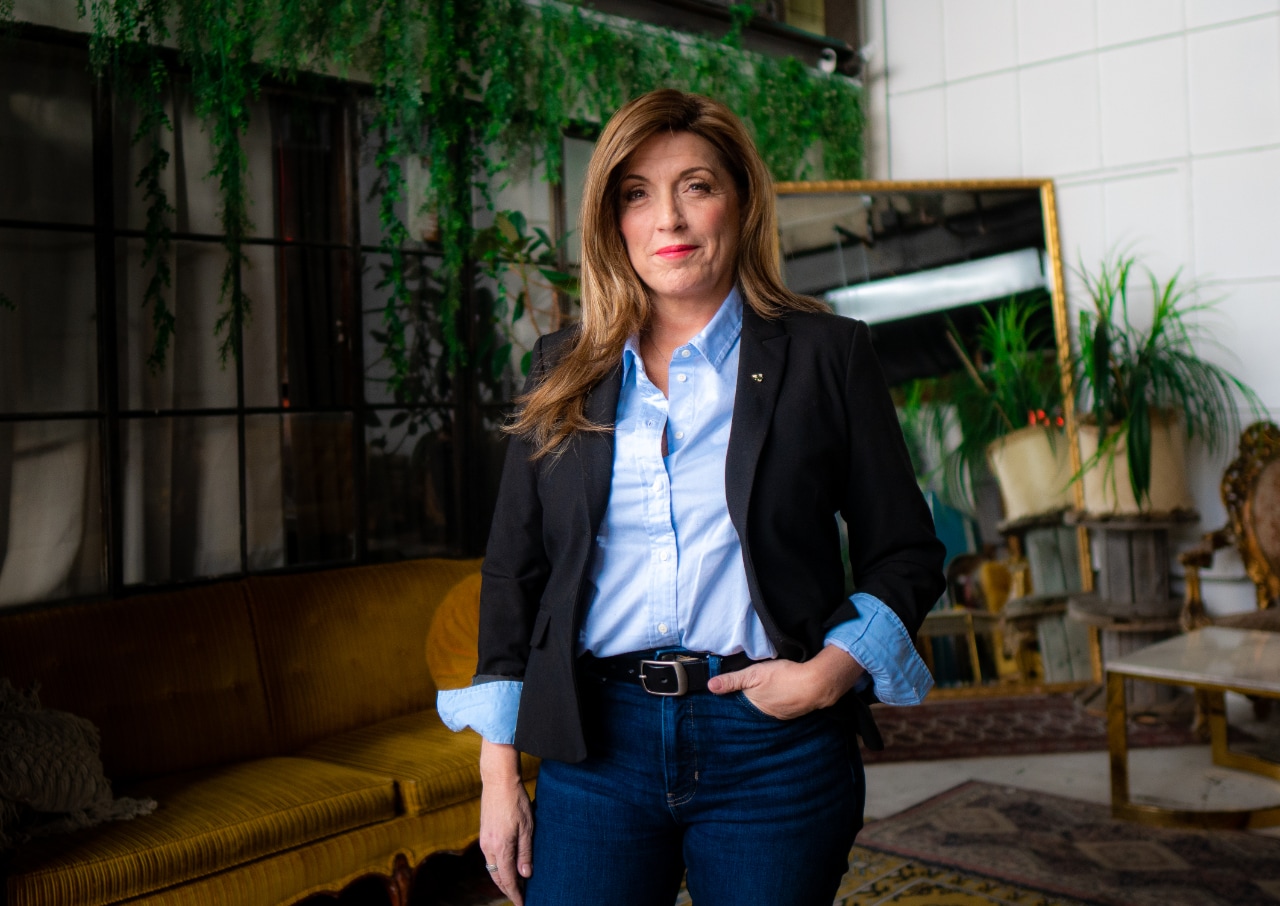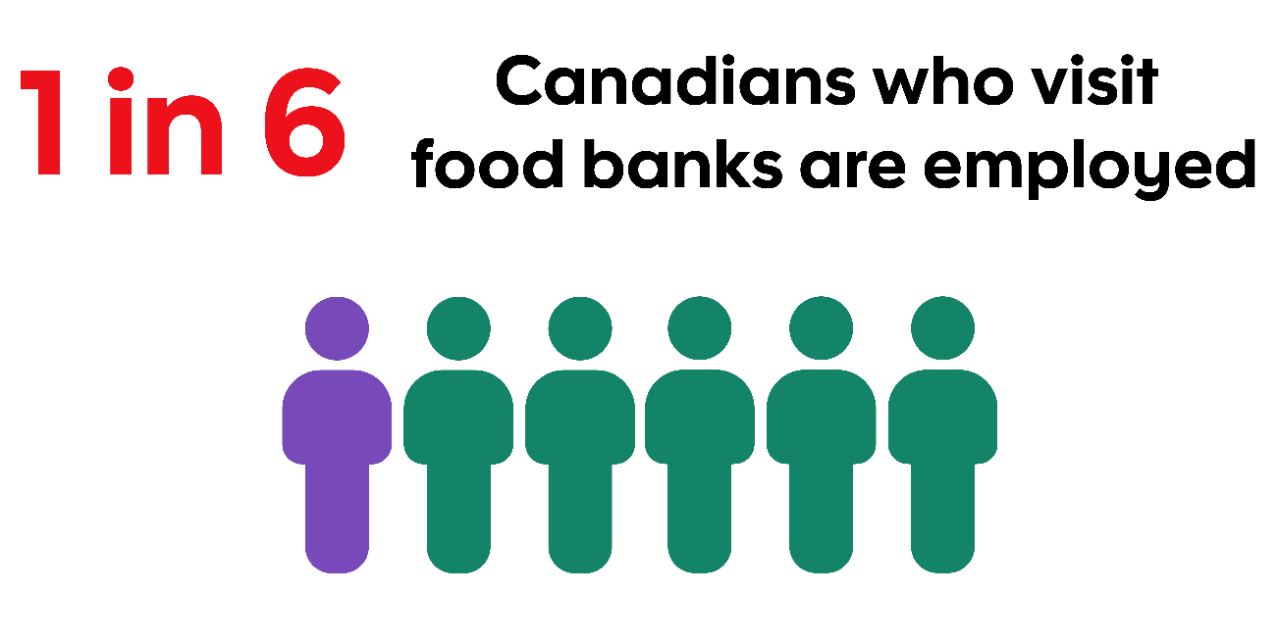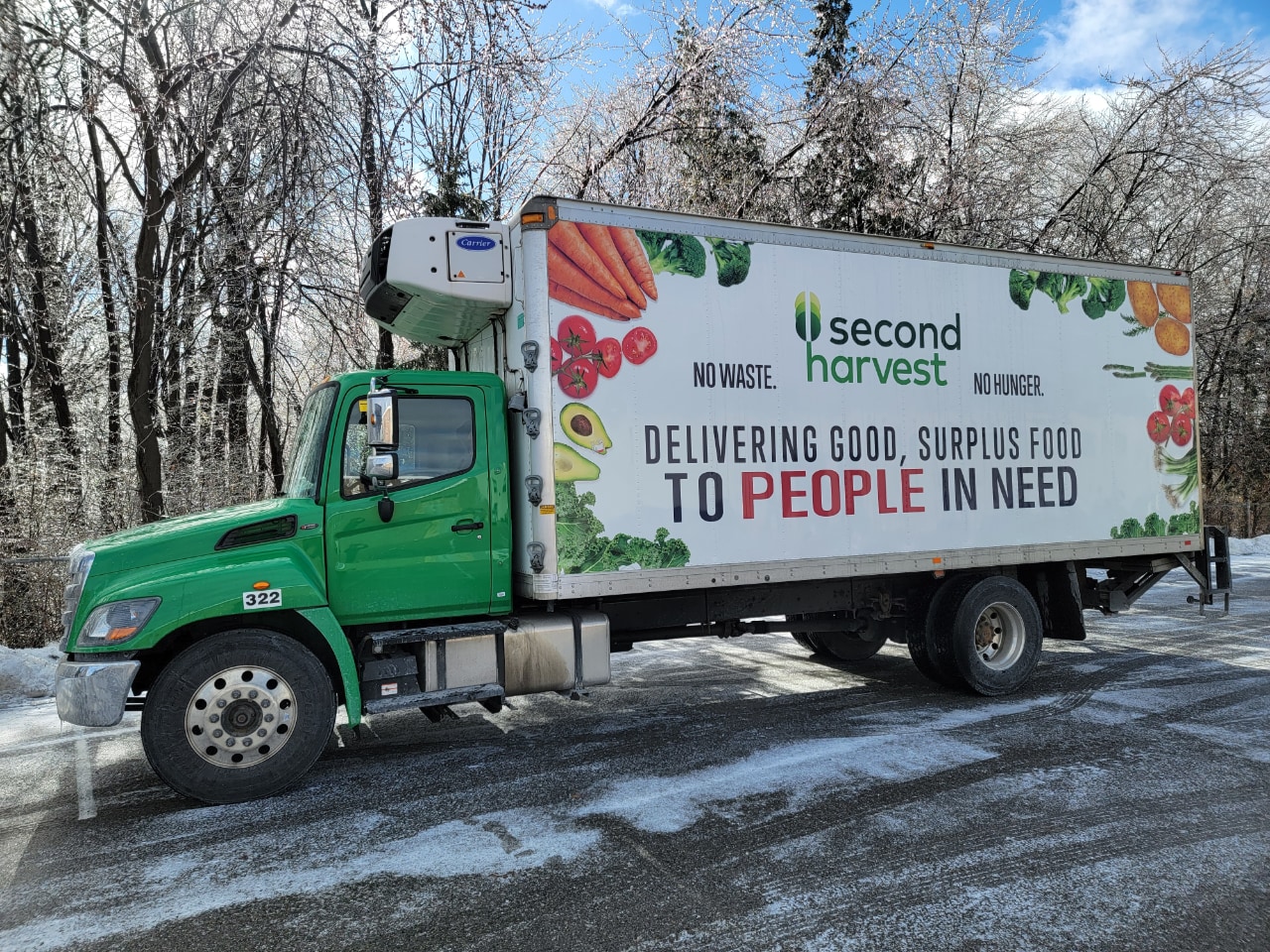Canada's largest food rescue organization, Second Harvest, rescued and redistributed a staggering 74.4 million pounds of food this year — surpassing its target two years early.
With this rescued surplus — edible food that businesses can’t use — Second Harvest was able to support more than 4,400 non-profits and charities such as food banks and shelters.
It comes at a time of increasing need, with inflation and higher interest rates impacting many Canadians' ability to make ends meet, and non-profits and food charities are also facing the same pressures.
“We have wait lists of organizations needing food and the amount of food that we’re giving still isn’t enough,” said Second Harvest’s CEO Lori Nikkel. “We could be doing 10 times what we’re doing.”

Photo: CEO Lori Nikkel
Credit: Second Harvest
Supporting the working poor
Rescuing food is more important than ever, with food banks in Canada seeing record demand.
Feed Ontario, a collective of hunger relief organizations, published a report in late November that said there was about a 38% increase in unique individuals visiting foodbanks over last year, the highest single-year increase ever reported and double the increase seen after the 2008 recession.
The report also said that one in six people who visit food banks was employed.
In 2022, Second Harvest’s partners reported a 134% increase in the number of clients served, and a further 60% increase is expected for 2023.
“I think the state of the economy is hitting us all; whether you were low-income before or not, you are feeling it,” Nikkel said, adding that all sorts of people are resorting to food charities, including those with jobs, university degrees or even small businesses.
Following the supply chain
To respond to this demand for food, Second Harvest’s model targets food businesses across the supply chain — from grocery retailers to hotels and restaurants — and connects them to charities and non-profits across Canada.
It focuses on rescuing perishable, nutrient-dense food such as fruits and vegetables, meat and protein alternatives and dairy.
“Healthy food is really expensive,” said Nikkel. “That's why we prioritize protein, dairy and produce, because that's the hardest food to access when you're low income.”
In 2019, Second Harvest published a ground-breaking report quantifying food waste in Canada.
It found that Canadians waste $49 billion worth of food a year. It’s not only a waste of money and sustenance, this results in the equivalent of roughly 56.6 million tonnes of carbon dioxide emissions. (Food in landfills creates methane gas, which is 25 times more damaging to the environment than carbon dioxide.)

Source: Feed Ontario report
ScotiaRISE partnership
Scotiabank has been a partner of Second Harvest since 1988. The recently renewed partnership through ScotiaRISE, Scotiabank’s 10-year, $500-million initiative aimed at promoting economic resilience among disadvantaged groups, will support the continued scaling of the food rescue program.
"We can't do what we do without organizations like Scotiabank supporting this kind of work" said Nikkel.
ScotiaRISE donated $500,000 to Second Harvest over three years. The funding is expected to support approximately 30,000 individuals annually and will primarily be directed to the transport infrastructure and third-party logistics network to help Second Harvest work with businesses across the food supply chain.
More than 7,000,000 meals have been served thanks to the partnership.
"With economic pressures making it more difficult for many to make ends meet, Second Harvest’s mission to rescue food and support charitable organizations and reach those who are vulnerable is ever more important," says Maria Saros, Vice President and Global Head of Social Impact at Scotiabank. “Through ScotiaRISE, we are proud to support its work to help Canadians access healthy food while reducing food waste and reducing carbon emissions as well.”

Credit: Second Harvest
Research coupled with innovation
Last year, Second Harvest set an ambitious three-year target of 72 million pounds of rescued food by 2025. It reached its target early due to several factors, including technology, said Nikkel.
She says its Food Rescue App, launched in 2018, was a “game changer” because it enabled Second Harvest to be a "broker" between its charitable partners, providing them with healthy surplus food nationwide. Businesses log in and create a donation posting, and nearby non-profits who are on the app are notified about available donations and can claim them. The app connects retailers and other businesses directly with organizations in need.
“Without the app, there is not way we would have reached such a target,” Nikkel said.
Another factor that helped was Second Harvest’s research on food waste, which gave the organization credibility, Nikkel said.
Also key was growing awareness, and sense of urgency, around food waste and food insecurity.
“People are talking about food waste in a way that they haven’t before. I think there is a bright light on poverty in Canada and food insecurity that has not been there before,” Nikkel said. “The first step of solving a problem is acknowledging you have one, and I think that’s definitely happening.”

